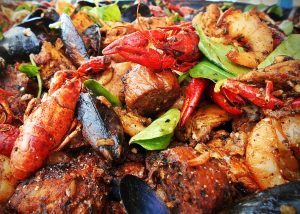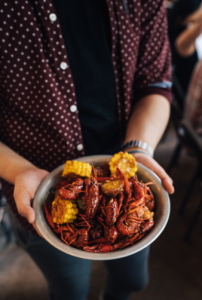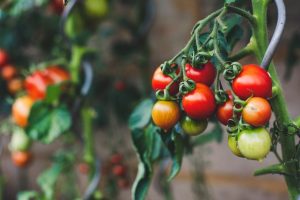OAKHURST — Join the very first ever Idle Hour Winery & Kitchen Social Club Party! Enjoy a mask decorating workshop, a Cajun & Creole menu along with Zydeco & Jazz music at this New Orleans experience!
 Date & Time: Tuesday, February 21, from 3 – 8 p.m.
Date & Time: Tuesday, February 21, from 3 – 8 p.m.
Click here to reserve your table.
Idle Hour Winery & Kitchen
41139 Highway 41
Oakhurst , CA 93644
559-760-9090
What exactly is the difference between Cajun and Creole cooking?
Cajun and Creole cooking are two distinct regional cuisines that originated in Louisiana, a southern state in the United States. Although there is some overlap between the two styles of cooking, they have unique differences in their ingredients, techniques, and cultural influences.
Cajun cooking is associated with the Cajun people, who are descendants of French Canadians who settled in Louisiana. The cuisine features hearty, rustic dishes that were originally created to make use of available ingredients, such as rice, seafood, and game meats like alligator, duck, and rabbit.
Cajun cooking often includes the use of spices such as cayenne pepper, paprika, and garlic, as well as the “holy trinity” of vegetables: onions, bell peppers, and celery. Roux, a mixture of flour and fat that is cooked until it turns brown, is often used as a thickener in Cajun dishes.
Creole cooking, on the other hand, is associated with the Creole people, who are descendants of French, Spanish, African, and Caribbean immigrants who settled in Louisiana. The cuisine is characterized by more complex flavors and a wider range of ingredients than Cajun cooking.
Creole dishes often feature seafood, pork, and chicken, as well as vegetables such as okra, tomatoes, and peppers. Spices like cayenne, paprika, and thyme are commonly used, as well as herbs like bay leaves and parsley. The use of roux is also common in Creole cooking, but it is often lighter in color and flavor than in Cajun cooking.
Overall, while Cajun cooking tends to be more rustic and heavily spiced, Creole cooking is often more complex and diverse, with a wider range of cultural influences.
Both styles of cooking are deeply ingrained in the history and culture of Louisiana and continue to be celebrated for their unique and flavorful dishes.
Here’s a little sample of some Zydeco, featuring Clifton Chenier (of course).







